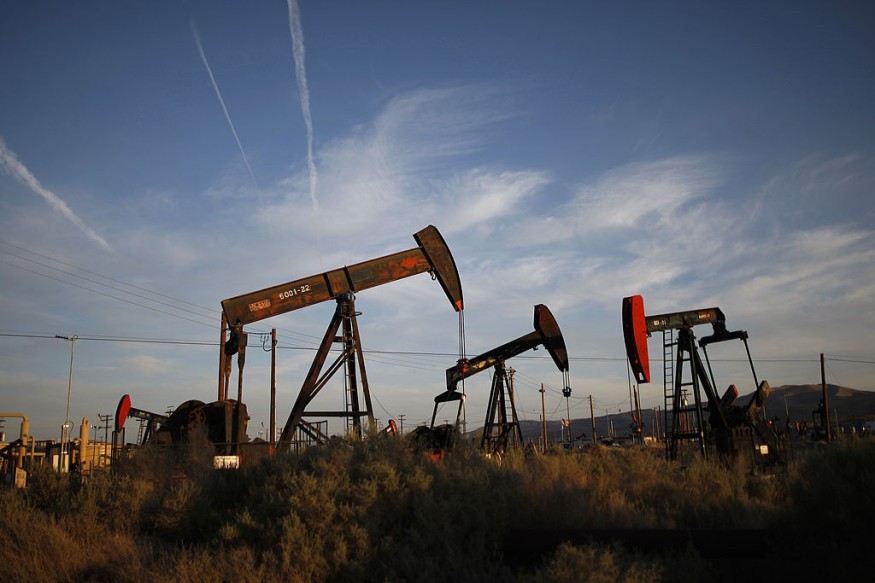U.S. Oil and Gas Industry Seen to Worsen Climate Change With 30 Percent More Greenhouse Gas Emissions by 2025

Environmental Integrity Project's new research shows that the U.S. oil and gas industry could emit 227 million tons of additional greenhouse gas emissions by the end of 2025 with its plans to expand and build 175 projects.
That translates to the U.S. producing 30 percent more greenhouse gas pollution by 2025 than in 2018. Gizmodo reported that state and federal records noted that oil, gas, and petrochemical industries are eyeing to create 157 projects, such as refineries, oil and gas drilling sites, as well as plastics plants in the next five years.
Oil and gas companies are reportedly preparing to offset the reduction recorded in last year's U.S. greenhouse gas emissions with their projects.
In a statement, Courtney Bernhardt, Research Director at the Environmental Integrity Project, said the analysis shows that the country is heading in "the wrong direction," adding that there's a need is to slow emissions from the oil, gas, and petrochemical industries.
Aside from contributing to the climate crisis, the report noted that the 157 new oil and gas projects would also be a public health disaster. They could emit thousands of tons of toxins that contribute to air and water pollution, leading to more asthma and heart attacks, damaging the lungs, and killing fish in waterways.
According to Bernhardt, about half of the future projects are in Texas and Louisiana. The research director said people who live in the area would bear its effects, especially those in low-income communities.
Bernhardt noted that the industries responsible for driving fossil fuel production should "be held more fully accountable" for their actions and the consequences.
U.S. Oil and Gas Industry Projects
The U.S. is seen to account for 70 percent of the total projects expected to start operations by 2025, according to GlobalData.
GlobalData's report noted that 417 projects are expected to start operations in the U.S. between 2021 and 2025, according to a World Pipelines report in February.
Out of the total projects, 47 are upstream projects, while midstream projects will be at 234, with the refinery at 18 and petrochemical at 118.
Soorya Tejomoortula, Oil and Gas Analyst at GlobalData, said the U.S. has a significant count of projects set to start operations by 2025.
Tejomoortula noted that some of the projects had been delayed due to the COVID pandemic. However, he said the gradual recovery of the U.S. economy is expected to slowly gather momentum in the oil and gas industry.
A key project, known as the Point Thomson Expansion, will be having a total production capacity of 203,000 barrels of oil equivalent per day. It is set to start its operations in 2025, and it aims to monetize natural gas condensate in North Slope, Alaska.
Climate Change Plan
World leaders are set to meet at the U.N. Climate Summit, COP26, in Glasgow on October 31. According to NPR, executive director of U.N. Environment Programme Inger Andersen said governments must step up and do rapid actions to close the fossil fuel production gap.
Scientists noted that limiting the planet's warming is important to avoid the worst-case scenarios of climate change.
Under the 2015 Paris Agreement, countries had committed to limiting average temperature rises to less than 2 degrees Celsius above pre-industrial levels and attempting to limit them even further to 1.5 degrees.
It was adopted by 196 parties at COP21 in Paris on December 12, 2015. Countries will have to submit their plans for climate action, known as "nationally determined contributions," by 2020 and every five years thereafter.
READ MORE : Costa Rica Bags Prince William's Earthshot Prize Worth $1.4 Million for Its Climate Change Initiative
This article is owned by Latin Post.
Written by: Mary Webber
WATCH: Climate Change: Can Gas and Oil Companies Change Their Ways? - From BBC News
Subscribe to Latin Post!
Sign up for our free newsletter for the Latest coverage!

















